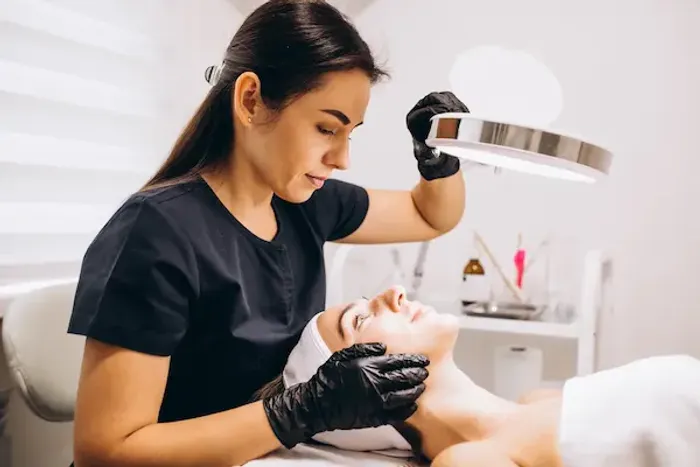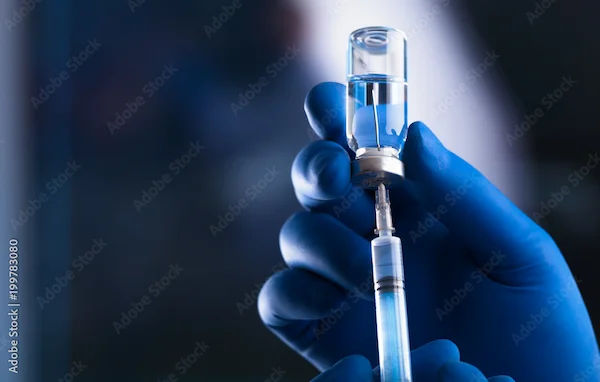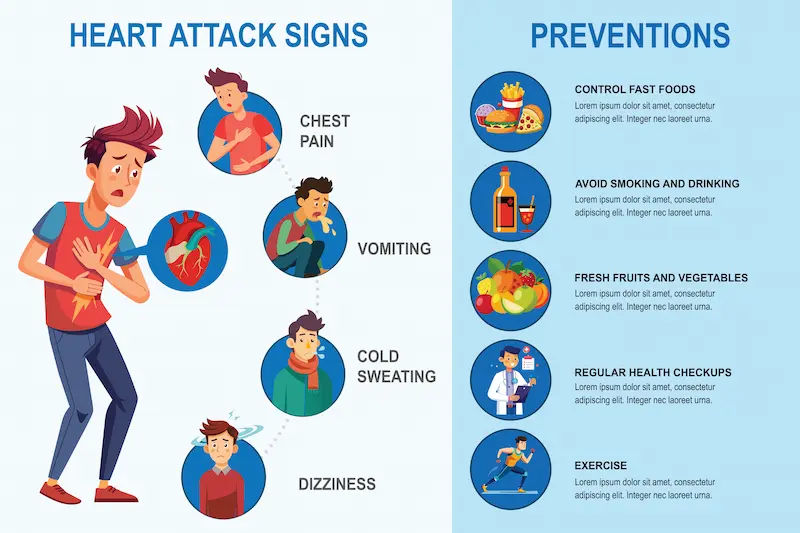Guide to Dermatology
Know about dermatology, why it's important, skin structure, common skin problems, skin cancer, prevention, diagnosis and treatment.


Introduction
If you’ve ever wondered whether that persistent rash needs a prescription, how to build a skincare routine that actually works, or what those changing moles could mean, you’re in the right place. Dermatology is the medical speciality focused on the skin, hair, and nails—the body’s largest organ system and your first line of defense. Because your skin reflects both external exposures and internal health, a thoughtful approach can prevent problems, calm flare‑ups, and even save lives through early skin cancer detection.
In this complete guide to dermatology, you’ll learn how your skin functions, the most common conditions and their evidence-based treatments, smart sun protection strategies, and how to navigate diagnostics, procedures, and daily skincare. You’ll also learn when to self-care, when to see a board-certified dermatologist, and how teledermatology can fit into your life. Whether you’re dealing with acne, eczema, hair loss, or simply aiming for healthier skin, this guide brings the best of dermatology to your routine—clearly, compassionately, and with practical takeaways you can use today.
What Is Dermatology?
Dermatology is the branch of medicine that diagnoses and treats conditions of the skin, hair, and nails. Dermatologists complete medical school and years of speciality training to master medical, surgical, and cosmetic care for more than 3,000 conditions—from acne and eczema to melanoma and autoimmune rashes [1]. Subspecialties include pediatric dermatology, dermatopathology (microscopic diagnosis of skin disease), and Mohs micrographic surgery (a precise skin cancer surgery that examines 100% of tissue margins during the procedure).
A key strength of dermatology is pattern recognition combined with targeted testing (like biopsies). Many conditions look similar on the surface, e.g., eczema vs. contact dermatitis vs. psoriasis. Dermatologists use clinical clues (distribution, scale, itch, triggers) and tools like dermoscopy to narrow down causes and choose the right treatment [4]. They manage medical issues (psoriasis, lupus, infections), perform procedures (biopsies, cryotherapy, surgical excisions, lasers), and advise on cosmetic concerns (scars, hyperpigmentation, injectables).
Consult a Top Dermatologist for Personalised Advice
For the general public, understanding the scope of dermatology helps them know when to seek care. If a rash is not improving with simple moisturisers, an acne flare is scarring, a mole is changing, or a scalp condition is causing shedding, dermatology offers targeted solutions. Teledermatology can evaluate many concerns via photos and video, while in-person visits are key for procedures and full skin exams. Unique insight: dermatology often intersects with internal medicine—psoriasis ties to metabolic syndrome, hair loss can reflect thyroid/iron status, and rashes may signal medication reactions. Think of your skin as a barometer of overall health.
Medical, surgical, and cosmetic branches
The division is based as follows:
Conditions dermatologists treat most often
How Your Skin Works
Skin is a multilayered organ with specialised roles. The epidermis (top layer) contains the stratum corneum, your barrier “brick-and-mortar” of corneocytes (bricks) and lipids (mortar). It locks in moisture and blocks irritants and microbes. The dermis (beneath) adds strength via collagen and elastin and houses vessels, nerves, and follicles. The subcutis (fat layer) insulates and cushions. A healthy skin barrier has a slightly acidic pH (~5), which supports your microbiome—beneficial bacteria, fungi, and mites that coexist on the skin and help resist infection.
Why this matters
Many everyday problems trace back to barrier damage (over-exfoliating, harsh cleansers, low humidity). Signs include
stinging, flaking, and increased sensitivity. Barrier repair—gentle cleansing, humectants like glycerin, and moisturisers
with ceramides—often calms irritation and reduces flare risk. UV radiation (UVA and UVB) penetrates skin, causing
DNA damage and photoaging; broad-spectrum sunscreen mitigates both]. Meanwhile, sweat glands regulate temperature and nerve endings signal itch and pain.
Skin layers and barrier basics
Microbiome and pH: Why “gentle” wins
The Most Common Skin Conditions and Evidence-Based Care
Acne, eczema, psoriasis—what to try first
- Acne: Up to 85% of people aged 12–24 experience acne [1]. Causes span oil overproduction, clogged pores,
Cutibacterium acnes, and inflammation. Evidence-based treatments include topical retinoids (tretinoin/adapalene),
benzoyl peroxide, and, for moderate to severe cases, oral antibiotics (short courses with benzoyl peroxide to reduce resistance) or hormonal therapy in females; isotretinoin for severe, scarring acne. - Eczema (Atopic Dermatitis): A chronic, itchy inflammation that affects roughly 10% of children and many adults. Hallmarks include dry skin, intense itch, and flexural rashes. First-line care centres on barrier repair (thick, fragrance-free moisturisers), trigger management, and topical anti-inflammatories (steroids or calcineurin inhibitors). Moderate-to-severe cases may benefit from phototherapy or biologic therapy (e.g., dupilumab).
- Psoriasis: An immune-mediated disease (~2–3% worldwide) with well-demarcated, scaly plaques on elbows, knees, scalp, and nails, and associations with psoriatic arthritis and cardiometabolic risk. Treatment ranges from topical steroids/vitamin D analogues to phototherapy and systemic agents, including biologic therapy targeting IL-17, IL-23, or TNF. Long-tail terms: psoriasis biologic therapy; dandruff vs. scalp psoriasis.
Infections and hives—when to test and treat
- Infections: Impetigo (bacterial), herpes simplex and shingles (viral), ringworm and athlete’s foot (fungal), and scabies (parasitic) are common [4,8]. Culture or PCR can confirm. Antimicrobials are used selectively—antibiotic stewardship is vital. For ringworm and nail fungus, confirm the diagnosis before long courses of antifungals [4]. If symptoms persist beyond two weeks, consult a doctor online with Apollo24|7 for further evaluation.
- Hives (Urticaria): Itchy, transient welts, often due to infections, medications, foods, or unknown triggers. Acute cases respond to non-sedating antihistamines; chronic urticaria may require higher, guideline-based doses and specialist input [8]. Long-tail terms: allergies and hives; patch testing for contact allergy.
Skin Cancer: Checks and Sun Safety
ABCDE self-exam and skin colour nuances
Skin cancer is the most common cancer; UV exposure is the key preventable risk factor [9,10]. Melanoma is less
common but more deadly if not caught early. Everyone—regardless of skin tone—should know the ABCDEs of mole checks: Asymmetry, Border irregularity, Colour variation, Diameter >6 mm (or evolving), and Evolving change [1]. In darker skin, melanoma may occur on palms, soles, nails (look for a widening dark streak), and mucosal sites.
Prevention pillars:
- Broad-spectrum sunscreen SPF 30+ daily, SPF 50 for extended outdoor time; reapply every 2 hours and after swimming/sweating.
- Protective clothing, wide-brimmed hats, UV-blocking sunglasses.
- Seek shade 10 am–4 pm; avoid tanning beds.
- Don’t forget ears, scalp, lips, and the tops of feet.
If you notice a changing spot, book an in-person dermatology visit; early biopsies save lives. If a suspicious lesion is present, avoid delays—book a physical visit to a doctor with Apollo24|7.
H2: Hair, Scalp, and Nail Health
Hair loss types and when to test
Hair: Common issues include androgenetic alopecia (pattern hair loss), telogen effluvium (shedding after stress/illness),
and alopecia areata (autoimmune patches). Androgenetic alopecia often responds to minoxidil (topical/oral) and
finasteride (for men; discuss risks/benefits); women may consider spironolactone when appropriate. Telogen effluvium
resolves over months once triggers (fever, childbirth, crash diets, iron deficiency, thyroid imbalance) are addressed. Consider lab checks if shedding persists. Apollo24|7 offers convenient home collection for tests like ferritin, thyroid panel, vitamin D, or HbA1c if a systemic cause is suspected.
Scalp and nails—what your clues mean
- Scalp: Dandruff (seborrheic dermatitis) relates to Malassezia yeast and responds to medicated shampoos (ketoconazole, zinc pyrithione, selenium sulfide) and anti-inflammatory agents. Distinguish from scalp psoriasis, which has thicker plaques and silvery scale; treatment may include topical steroids or vitamin D analogues. Long-tail terms: dandruff vs. scalp psoriasis; androgenetic alopecia treatment.
- Nails: Onychomycosis (fungal nail infection) causes thick, yellow, brittle nails. Confirm with microscopy/culture before months-long oral antifungals. Trauma, psoriasis, and eczema can also change nails, and certain patterns (e.g., new dark streaks) warrant prompt evaluation, especially in darker skin due to the risk of subungual melanoma.
Diagnostics and Treatments in Dermatology
Dermatology pairs clinical expertise with targeted diagnostics:
Biopsies, dermoscopy, and patch testing
- Dermoscopy: a handheld device that reveals pigmented patterns and vascular clues to help triage moles and rashes non-
invasively. - Biopsy: a small sample to confirm diagnoses like skin cancer, psoriasis, or drug reactions; results guide precise
treatment. - Cultures/PCR/KOH: identify bacteria, viruses, or fungi; crucial before long antifungal courses.
- Patch testing: detects allergic contact dermatitis to ingredients like fragrance, preservatives, or metals, guiding product
choices. - Imaging and lab tests: occasionally used for systemic or autoimmune conditions.
Treatments include:
Topicals: steroids, calcineurin inhibitors, retinoids, antimicrobials, keratolytics, and barrier-repair moisturisers.
Topicals, phototherapy, biologics, and procedures
- Phototherapy: controlled UV for psoriasis, eczema, vitiligo
- Systemic agents: antibiotics (short, targeted), antifungals (when confirmed), immunomodulators (methotrexate,
cyclosporine), and biologics for psoriasis/atopic dermatitis. - Procedures: cryotherapy, excisions, Mohs surgery, intralesional injections, lasers, and chemical peels.
A Dermatologist-Approved Skincare Routine for Every Skin Type
Start simple and consistent. A three-step routine—cleanser, moisturiser, and broad-spectrum sunscreen SPF 30 in the
morning—solves most needs. Add targeted activities slowly.
Core routine and activities by skin type
- Oily/acne-prone: Gel or foaming cleanser; non-comedogenic moisturiser; salicylic acid (0.5–2%) or benzoyl peroxide
(2.5–5%) in trouble zones; evening retinoid to prevent clogged pores [1]. Long-tail: acne treatment options. - Dry/sensitive: Creamy, fragrance-free cleanser (or rinse with water AM); ceramide-rich moisturiser; niacinamide
(2–5%) for barrier support; mineral sunscreen if chemical filters sting. - Pigment-prone/skin of colour: Daily SPF is non-negotiable; add azelaic acid (10–15%) or tranexamic acid for hyperpigmentation and use retinoids cautiously to prevent irritation-induced darkening [1,4]. Long-tail: hyperpigmentation in the skin of colour.
- Ageing/texture: Retinoid at night; vitamin C serum in the morning; moisturisers with urea/lactic acid for gentle
smoothing.
Patch testing and the 2-1-1 rule
Patch test new products on the inner arm or behind the ear for 72 hours (especially useful if you’ve had rashes to fragrances, preservatives, or essential oils) [4]. Introduce only one active every 2–4 weeks to identify reactions. Sunscreen every morning and reapplication outdoors protects your investment in all other steps.
When to See a Dermatologist and Getting Care
See a dermatologist for:
- A changing mole or a new spot that looks different from others.
- A rash with pain, blistering, fever, or systemic symptoms.
- Acne with scarring or not improving after 8–12 weeks of over-the-counter care. Eczema/psoriasis flares disrupting sleep,
work, or school despite moisturizers and OTC hydrocortisone. - Hair shedding lasting >3 months or sudden bald patches.
- Nail changes with pain, dark streaks, or deformity.
Conclusion
Healthy skin isn’t about chasing trends—it’s about understanding how your skin works, making daily choices that support the barrier, and using proven dermatology treatments when needed. Start with a simple routine and sun protection. Then, layer in targeted care for your specific concerns, whether that’s acne, eczema, psoriasis, hair loss, or nail issues. Remember that your skin reflects your overall health; persistent symptoms may point to allergies, infections, or systemic conditions that deserve proper evaluation.
Dermatology empowers you to act early—monitor moles with the ABCDEs, patch test new products, and keep a brief log of triggers and responses. Teledermatology makes it easier than ever to get timely help for routine follow-ups, while in-person care remains essential for full exams and procedures. If your condition does not improve after trying these methods, book a physical visit to a doctor with Apollo24|7. And if labs are needed to guide treatment, Apollo24|7 offers convenient home collection for common tests.
Consult a Top Dermatologist for Personalised Advice
Consult a Top Dermatologist for Personalised Advice

Dr. Bhavya Swarnkar
Dermatologist
14 Years • MBBS, MD, DNB (Dermatology, Venereology & Leprosy) Former Senior Resident, Department of Dermatology- AIIMS, New Delhi. Associate Consultant - Dermatology.
Bilaspur
Apollo Hospitals Seepat Road, Bilaspur
(250+ Patients)

Dr. S Madhuri
Dermatologist
10 Years • MBBS, MD. DVL, DNB, Fellow (Dermatosurgery & Lasers)
Secunderabad
Apollo Hospitals Secunderabad, Secunderabad
(325+ Patients)

Dr. Sonal Jain
Dermatologist
9 Years • MBBS, MD Dermatology, Venerology & Leprosy
Kolkata
MCR SUPER SPECIALITY POLY CLINIC & PATHOLOGY, Kolkata
(25+ Patients)

Dr. Sonal Jain
Dermatologist
9 Years • MBBS, MD (Skin & VD), DNB (DVL), Fellowship in Dermato Surgery
East Midnapore
VIVEKANANDA SEBA SADAN, East Midnapore

Dr. Jyotirmay Bharti
Dermatologist
15 Years • MBBS, DDV
Gurugram
SQUARE ROOTS- HAIR, SKIN AND LASER CLINIC, Gurugram
Consult a Top Dermatologist for Personalised Advice

Dr. Bhavya Swarnkar
Dermatologist
14 Years • MBBS, MD, DNB (Dermatology, Venereology & Leprosy) Former Senior Resident, Department of Dermatology- AIIMS, New Delhi. Associate Consultant - Dermatology.
Bilaspur
Apollo Hospitals Seepat Road, Bilaspur
(250+ Patients)

Dr. S Madhuri
Dermatologist
10 Years • MBBS, MD. DVL, DNB, Fellow (Dermatosurgery & Lasers)
Secunderabad
Apollo Hospitals Secunderabad, Secunderabad
(325+ Patients)

Dr. Sonal Jain
Dermatologist
9 Years • MBBS, MD Dermatology, Venerology & Leprosy
Kolkata
MCR SUPER SPECIALITY POLY CLINIC & PATHOLOGY, Kolkata
(25+ Patients)

Dr. Sonal Jain
Dermatologist
9 Years • MBBS, MD (Skin & VD), DNB (DVL), Fellowship in Dermato Surgery
East Midnapore
VIVEKANANDA SEBA SADAN, East Midnapore

Dr. Jyotirmay Bharti
Dermatologist
15 Years • MBBS, DDV
Gurugram
SQUARE ROOTS- HAIR, SKIN AND LASER CLINIC, Gurugram
More articles from General Medical Consultation
Frequently Asked Questions
1) What’s the difference between a dermatologist and an esthetician?
A dermatologist is a medical doctor specialising in skin, hair, and nails and can diagnose, prescribe, and perform procedures. Estheticians focus on cosmetic skincare and cannot diagnose or prescribe. For medical concerns, see a board-certified dermatologist.
2) How long should I try an acne routine before changing it?
Give evidence-based routines 8–12 weeks. Introduce one active at a time (e.g., a retinoid) and maintain barrier care. If breakouts are scarring or not improving, discuss acne treatment options with a dermatologist or via teledermatology online consultation
3) Do people with darker skin tones need sunscreen?
Yes. While melanin offers some protection, UV still drives hyperpigmentation and skin cancer risk. Use a broad-spectrum sunscreen SPF 30 daily; mineral or tinted formulas often blend better for skin of colour.
4) How do I know if my rash is an allergy?
If a rash appears where products or metals touch and improves when you stop exposure, allergic contact dermatitis is possible. Patch testing for contact allergy can confirm the culprit and guide safe alternatives.
5) When is nail fungus treatment necessary?
Confirm fungal infection with microscopy/culture before oral antifungals, as nails can change from trauma, psoriasis, or eczema. For confirmed cases, your dermatologist will discuss topical vs. oral options and monitoring.




